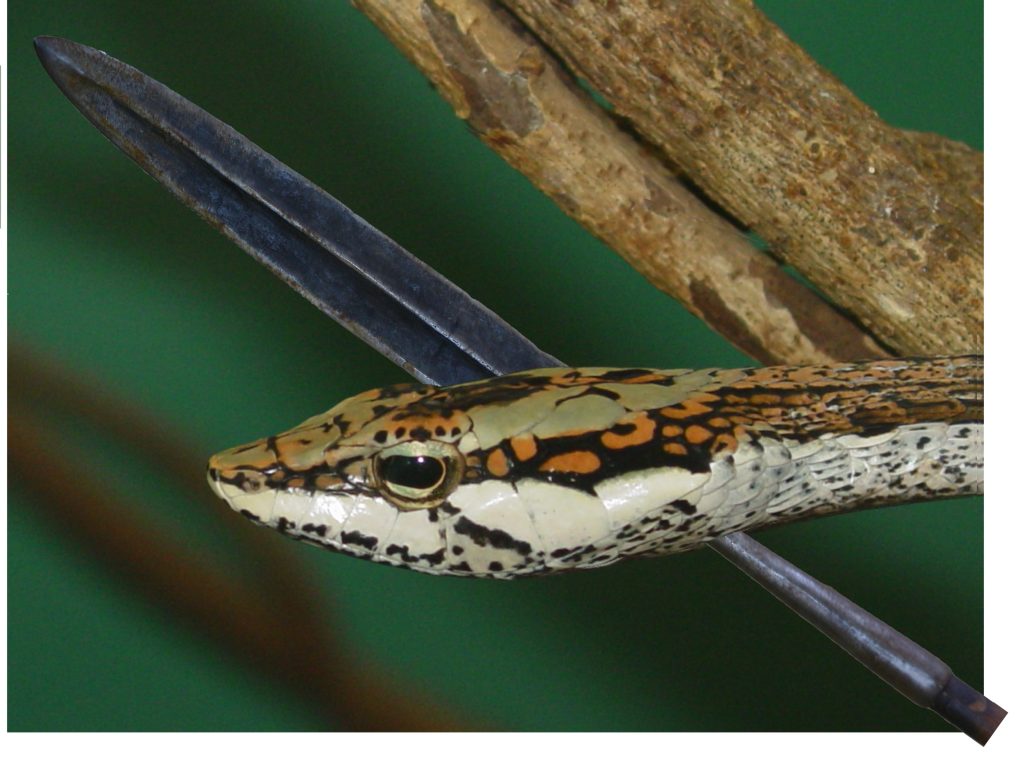Of all the snakes I have caught, this is the one I like to hold the least. Perhaps it is the knowledge that no antivenom is available or perhaps the concentrated, tense posture of the snake.
Because they are arboreal, you will not easily run into a twig snake. If you do run into one on the ground (like I did) it is probably wise to recognise it and give it a wide berth.
Description
The Twig, Vine, or Bird snake (Thelotornis capensis) has a pale blue-green upper head heavily speckled with dark brown, black, and sometimes pink.
A wide pink-white, black-speckled band runs along the upper lip from the snout to the back of the head passing across the lower half of the eye.
A dark oblique band radiates from each eye to the upper lip. The chin and throat are white, speckled with black. The tongue is bright yellow to orange-red and black-tipped. An unusual keyhole-shaped pupil with the eye in a very forward position gives this snake binocular vision – allowing it to recognize stationary prey at significant distances.
Vine Snakes come in many different patterns and shades. Colors vary from almost uniformly grayish-white with tiny black speckles along its body. As they age orange markings appear on the head and the grayish-white pattern becomes more complex, making them look just like twigs or branches as they lay motionless in trees awaiting their prey.
Habits
The Zulus believe that this snake strikes and wounds like a spear because of the blinding speed of the strike.
It seldom bites unless provoked, moving gracefully and swiftly when disturbed.
Although it is a timid snake, it will inflate its neck to display the bright skin between its scales when threatened, followed by lunging strikes while the bright tongue flickers in a wavy motion.
Although often called bird snakes, they prey largely on chameleons and lizards but small birds are frequently eaten by larger specimens of 1,5 meters long. Their gray-green blotched coloring blends perfectly with foliage in which they lie motionless for hours.
Venom
Slow-acting Haematoxic venom acts on the blood, disabling the clotting process and causes internal and external bleeding.
Symptoms typically occur 24-48 hours after being bitten. Venom is similar to that of the boomslang but as a rule less severe, nevertheless potentially dangerous. A number of deaths have been recorded. Bites are rare.
At present no antivenom is available.
First Aid
Immobilise and reassure the victim, who must lie down and be kept as quiet as possible. Apply a pressure bandage immediately, and immobilise the limb with a splint to reduce the spread of venom. Loosen, but do not remove the bandage if there is severe swelling. Take the victim to hospital as soon as possible.
Using a tourniquet to prevent the snake venom from being released in the bloodstream is extremely dangerous and could result in the loss of the affected limb. The cutting open and sucking out of venom is a waste of time.
Food
Chameleons, tree-dwelling lizards, birds, snakes.
Reproduction
Oviparous. Lays 4-18 eggs which hatch after 90 days. Young 230-330 mm.
Enemies
Birds of prey and other snakes.
Habitat
Trees and shrubs in moist savanna and lowland forest.
This is a series of photos taken by SW, a friend in his garden in Nelspruit.



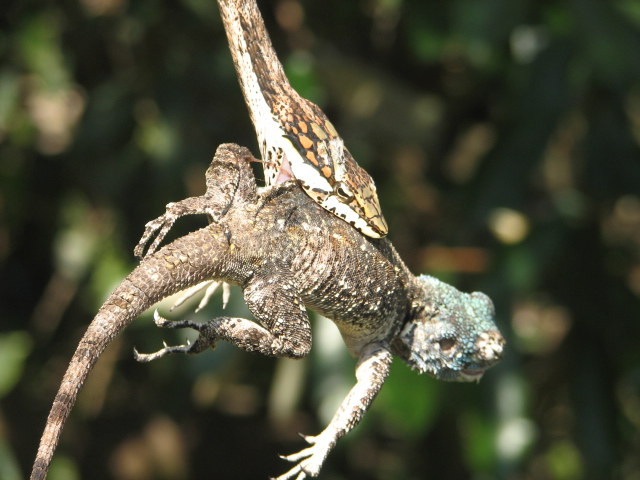
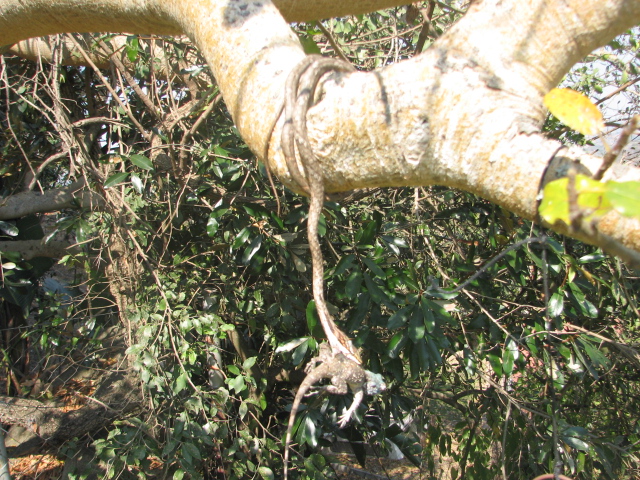
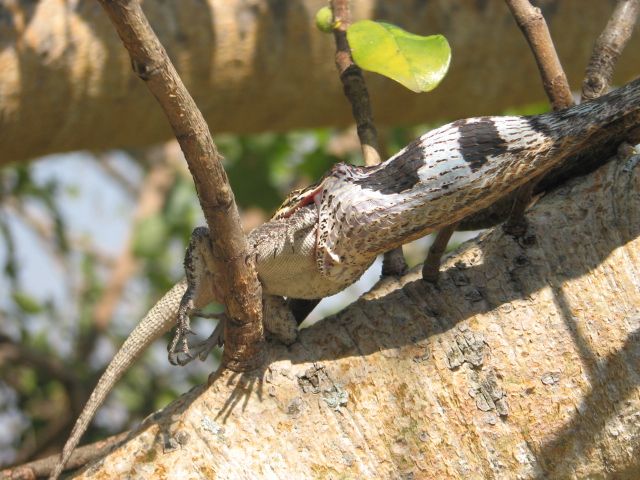

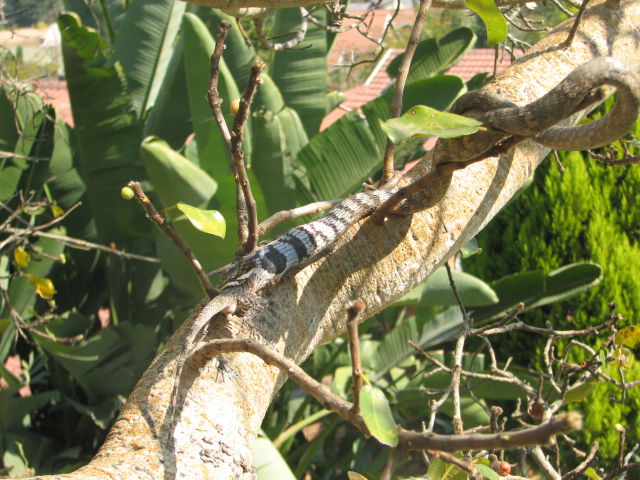
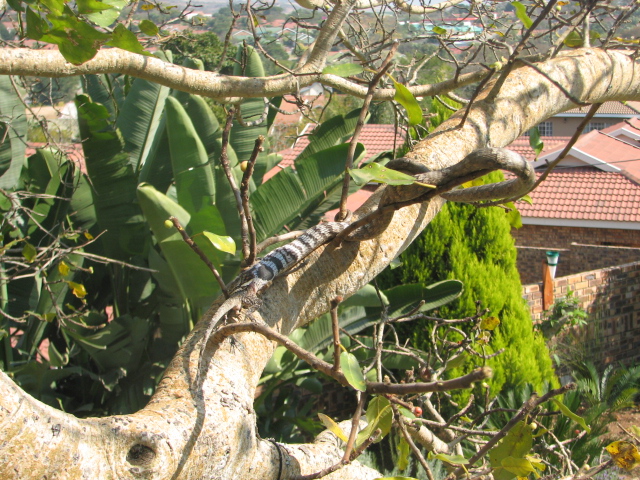

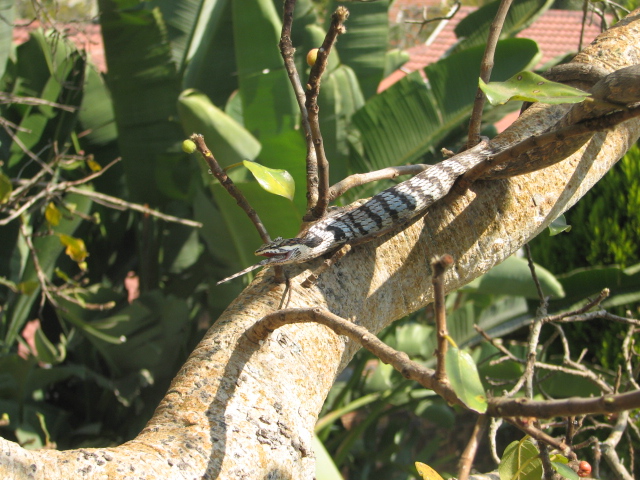 (Thelotornis capensis)
(Thelotornis capensis)

